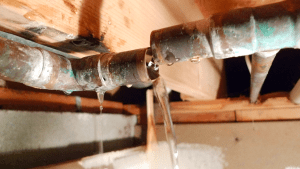How to Find and Repair Work Water Leaks-- A Comprehensive Guide
How to Find and Repair Work Water Leaks-- A Comprehensive Guide
Blog Article
This post listed below relating to Finding hidden leaks is exceedingly fascinating. Check it out yourself and decide what you think about it.

Early discovery of leaking water lines can minimize a possible calamity. Apart from saving you cash, it will certainly minimize the irritation and also disappointment. The moment you locate a leakage, calling your plumber for repairs is the most effective remedy. However, some tiny water leakages might not show up. If you can not find it with your naked eyes, below are some hacks that assist.
1. Take A Look At the Water Meter
Inspecting it is a surefire method that aids you discover leaks. If it moves, that shows a fast-moving leak. This implies you might have a sluggish leakage that might also be underground.
2. Inspect Water Consumption
If you identify unexpected changes, in spite of your intake being the same, it implies that you have leaks in your plumbing system. An unexpected spike in your bill shows a fast-moving leak.
A steady increase every month, even with the same practices, reveals you have a sluggish leakage that's also slowly intensifying. Call a plumber to thoroughly check your property, particularly if you really feel a warm area on your floor with piping below.
3. Do a Food Coloring Test
When it comes to water usage, 30% comes from bathrooms. Examination to see if they are running properly. Decrease flecks of food color in the storage tank and wait 10 mins. If the color somehow infiltrates your dish during that time without flushing, there's a leakage in between the container and bowl.
4. Asses Exterior Lines
Do not forget to check your exterior water lines as well. Should water seep out of the link, you have a loose rubber gasket. One tiny leak can throw away heaps of water and increase your water costs.
5. Evaluate the scenario as well as examine
Property owners ought to make it a routine to inspect under the sink counters and even inside cupboards for any kind of bad odor or mold and mildew development. These two red flags show a leakage so punctual focus is called for. Doing regular examinations, also bi-annually, can conserve you from a major trouble.
Check for discolorations and weakening as a lot of home appliances as well as pipes have a life span. If you presume leaking water lines in your plumbing system, don't wait for it to rise.
Early detection of leaking water lines can reduce a prospective calamity. Some small water leakages might not be visible. Inspecting it is a proven means that assists you find leaks. One little leakage can waste bunches of water and surge your water bill.
If you believe dripping water lines in your plumbing system, don't wait for it to intensify.
How to Know If Your Home Has a Hidden Leak
Water Meter Reveals Inexplicable Water Usage
If you’d like to test whether or not there’s a leak somewhere in your home, you can do this using your water meter. Here is how to conduct the test:
Don’t use any water in your home for at least 30 minutes; this also means not turning on faucets or water-using appliances.
Go outside, and check your water meter for activity.
If your water meter shows that there was activity, even though no one was using any water, this proves that there is a leak in your home.Visible Mold or Mildew Growth
Leaks behind walls create moist, dark environments that allow mold and mildew to grow and thrive. Eventually, you might see mold growth forming on the wall closest to a hidden leak.
If mold is growing in an area that receives a high amount of moisture, such as a bathroom, it may simply be an indication that better ventilation is needed. However, if you see mold growth on a wall or the ceiling in an area where you would not expect, you probably have a hidden leak.
Musty, Mildew Odor
Sometimes you might not be able to see the mold or mildew that is growing as a result of a leak. However, the smell can give the problem away just as easily. If you catch a whiff of something musty, there’s a good chance that old water is collecting somewhere in your home that you can’t see.
Stained/Warped Walls, Ceilings, or Floors
When your home soaks up water, a variety of red flags can become visible, including ceiling stains, bubbling drywall, warped walls, and sagging floors. While these issues can be caused by excess humidity, they can also be signs that a pipe or plumbing connection has started leaking behind your walls.
Inexplicably High Water Bill
After a while, you get a general sense for what your water bill should be. If you own a pool or sprinkler system, your bill will tend to be higher during summer. However, if you receive a water bill that seems especially high, and you can’t figure out what caused it, then you may have a hidden leak somewhere that’s increasing your bill.
https://www.plumbingjoint.com/blog/2019/july/how-to-know-if-your-home-has-a-hidden-leak/

We had been shown that write-up about Finding hidden leaks from an associate on a different website. Make sure you take the opportunity to distribute this post if you enjoyed reading it. Many thanks for your time. Please visit our blog back soon.
Report this page